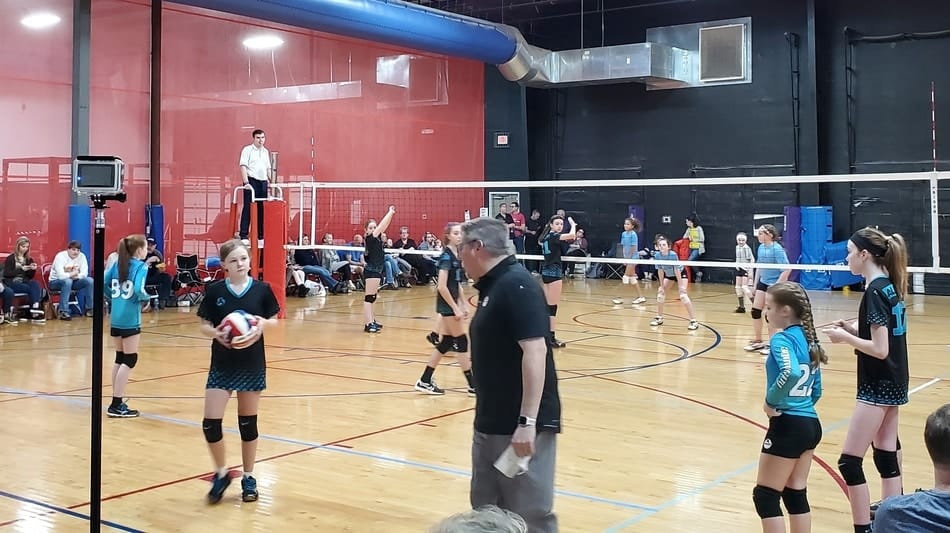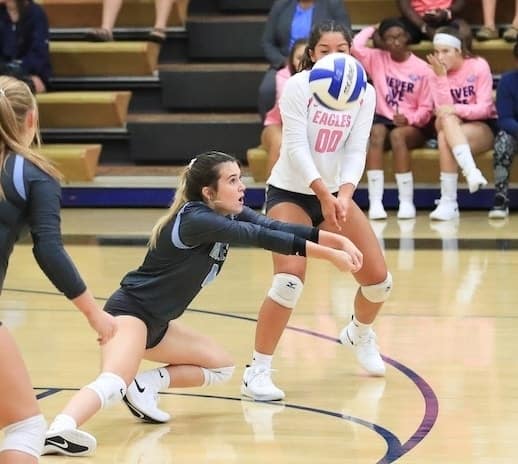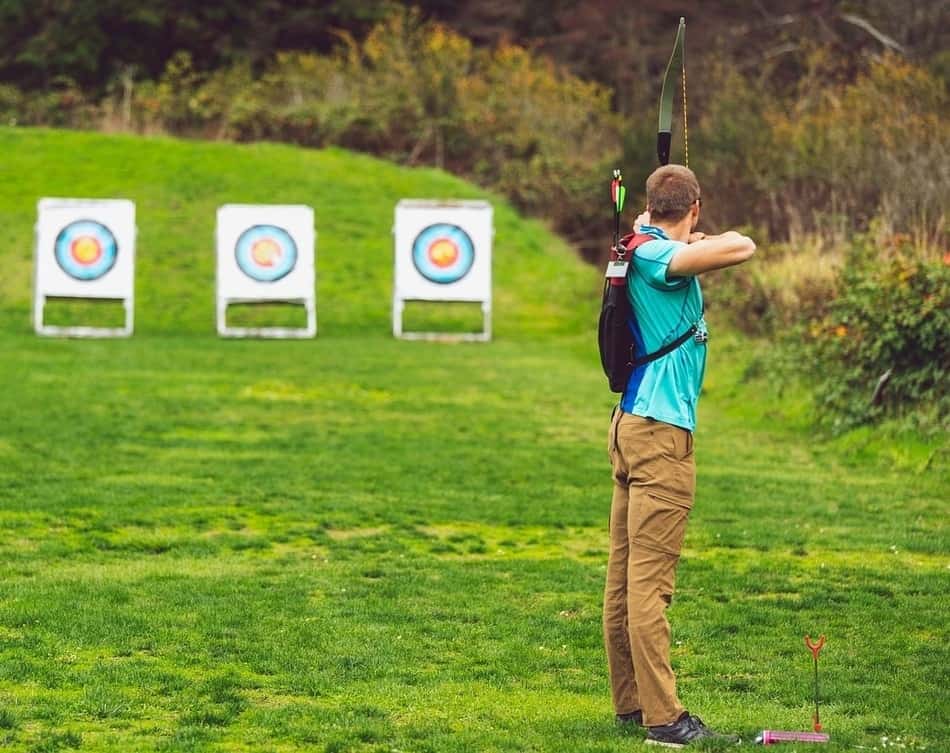A lot of times in sports, we may think we understand the rules, but the details in keeping the statistics may leave us wondering if we really understand what counts.
What counts as an ace in volleyball? In volleyball, an ace is a serve that directly results in a point. If you serve the ball and the other team really isn’t able to handle it, that’s an ace!
It’s the most common way that you as a player can score a point for your team all by yourself. It’s not easy to do, but with some practice, you can become a strong and strategic server and use that skill as a weapon for your team.
What Are The Different Ways You Can Get An Ace?
You may not realize there are actually a few ways you can earn an ace. Read through them, because you may be surprised!
The Ball Touches The Floor Before Your Opponents Can Get It
This is the most common way people picture an ace in volleyball. You serve to an open space on the floor, or the defenders simply miss the ball and no one touches it. When the ball lands on the opponent’s side without being played, that is definitely an ace.
The Ball Hits The Net And Drops On The Other Side
When the ball hits the net, anything can happen. It can fall on the server’s team’s side and end up being a serving fault and they lose the point.
When the ball hits the net and crosses over, it’s a live ball. The opponents will be able to play it, but it’s difficult to play those serves consistently. Often, the defender is scrambling to just get the ball up and out of the net.
If it hits the net and drops to their side, you’ve earned an ace. But also when they fail to make it playable, when they can’t get it up and into play, you’ll usually be credited with an ace.
Your Opponents Shank The Ball
If a player makes a play on the ball but after the contact the ball is unplayable, that is an ace. So when the receiver shanks the ball and it goes wild, whether someone races to try and get it or not, it’s an ace.
Not sure what a shank is? Learn all about what a shank is in volleyball and how to help your team stop shanking the ball. Visit this article.
The Receiver Is Called For A Violation
Typically this is going to be when the player receiving the ball is called for a lift or a double hit. Keep in mind that the rules for the first contact on the serve have become pretty forgiving for the receiver, so this is more difficult than it sounds.
If you serve the ball well enough that they make a mess of it, you get the ace!
The Receiving Team Is Out Of Rotation
If you happen to be the lucky server who is serving when the other team is called for being “out of rotation” you will earn an ace. With the rally point scoring system, each rally or play is worth a point.
Since the ref was ready for you to serve and you were ready to serve and the other team had a violation of the rules, your team gets the point and your “serve” was not returned. Ace!
Tips For Improving At Serving Aces
You can find a lot of opinions in the volleyball world about just how a player should serve. You will have coaches that will indicate a serving target for you on every serve, or you’ll have coaches that want you to play it safe and just put the ball in play. Sometimes the same coach will change up their strategy throughout every match depending on whether your team is ahead or behind.
Targeting Your Serve
No matter what level you are playing at, choosing to target your serve is absolutely critical. You should NEVER walk up to the line and just carelessly hit the ball over the net to the middle of the other team’s court.

Even as a beginner, you should be picking a specific spot that you want the ball to land, whether it does or not.
Why You Should Choose A Target
There’s an old saying from hunters when they learn to shoot, “Aim small, miss small.” The first time I heard that I thought it sounded so silly! But the idea is that by being very specific with where you want the ball to go with your serve, you’re limiting the possibilities of where the ball will go.
As an athlete, anything you can do within the rules of the game to give yourself an edge should be something you put effort into. By intentionally choosing a target you are mentally setting yourself up as an attacker who wants to score points.
Which Target Should You Choose?
In the early levels of volleyball, the main thing you should do is look at the space on the other side of the court. Where is there a gap that’s just a little bigger than it should be? Which players are not ready to cover their whole zone of the floor? This will get more and more challenging to find as you progress through the higher levels.
Throughout the game, be watching and keeping track of who on your opponent’s team is a good passer and defender. Whether they are digging spikes or returning serves, who struggles to get to the ball, make a solid pass and keep it under control? Keep a mental list of who is the weakest or who is at least having a bad game.
Eventually, you’re going to meet teams that have good defensive spacing and good solid defenders who consistently play the ball well. So then how do you pick a target? Start looking for a seam. Sometimes you don’t need a big open gap 8 feet wide, you just need enough of a space to make your opponents hesitate.

You can often get the ball just out of reach in between them and they’ll have to choose who is going for it or they’ll collide trying. Make them work for it and you’ll be surprised how many times their defense falls apart.
Serving Aggressively
My daughter has played 3 seasons now with one of her teammates that really stands out as a dominant server. She scores more than her “fair share” of aces every season.
The main reason she scores more aces than anyone else every season is because when she steps to the line, she’s always in 100% attack mode. There’s no question, there’s no second-guessing, she wants the point. She is willing to risk the whole game on every serve if that’s what it’s going to take to win the point.
Sometimes this has been clutch in helping the team get on a comeback streak and sometimes it may have cost us a game where we could’ve stayed in it, but she lost the point to serving into the net.
Personally, I don’t prefer players that are locked into that mindset all the time. I think as competitors we should be strategic and flexible depending on the game situation. But this article is about aces, and the truth is, serving aggressively scores more aces!
Practice Consistent Movement
So you’re choosing targets and you’re serving aggressively, is that all it takes? The hardest part to really getting the results you want is to be consistent.
When you’re serving there are a lot of variables that you can control. It’s the one time during the whole game where you can take your time, breathe, stand exactly where you want, and plan your next move.
Work very hard to build good muscle memory. That means using good fundamental movements that you are doing intentionally to produce the same results over and over.
Think about the archer who is going to hit consistent bullseye shots on their target. They need to stand with their feet in the same position, line their upper body the same each time, draw the bowstring back to the same spot on their cheek and use the same technique to release the string. If they change just one of these variables, the result could be that the arrow is 10 feet off the mark!

You will see volleyball players that develop a routine when they get to the line. They’ll dribble the ball the same way, the same number of times, they’ll look up the same way and they’ll toss the same. That doesn’t happen by accident, they’ve carefully practiced all those movements.
By practicing consistent good movements you’re not guaranteed to hitting every serve right, but you’re giving yourself a great opportunity. You can build consistent results through these good habits.
Can The Volleyball Hit The Net On The Serve?
Absolutely! It used to be, that the ball could not touch the net or it was a serving fault and you would lose the serve. Several years ago the FIVB decided to change the rules to make the game more exciting.
Now those serves that hit the top of the net and barely dribble over the other side and drop straight down have become a GREAT serve! Many aces are just an inch away from disaster – a net serve. If you get really good at hitting the tape at the top of the net, you can be a very tough server to handle!
References:
Official Volleyball Statistics Manual NCAA: http://fs.ncaa.org/Docs/stats/Stats_Manuals/VB/2008%20VB%20Stats%20Manual%20easy%20print.pdf
https://www.sdhsaa.com/Athletics/Girls-Sports/Volleyball/Statistical-Guidelines-and-Definitions
Photo Credits:
Feature image by RonJonMan on flickr.com: https://creativecommons.org/licenses/by-sa/2.0/, cropped to fit the layout.
Archery image by Vlad Vasnetsov from Pixabay
Recent Posts
Athletes, listen up! Do you have a closet full of old jerseys, sweatpants, and tees that you just can't seem to part with? Well, dust them off, because you're sitting on a goldmine of fashion...
You may have heard, or you may have noticed, that there's been a change to the rule about double contact in volleyball. In 2022, an experimental rule change began to be implemented, where the double...
